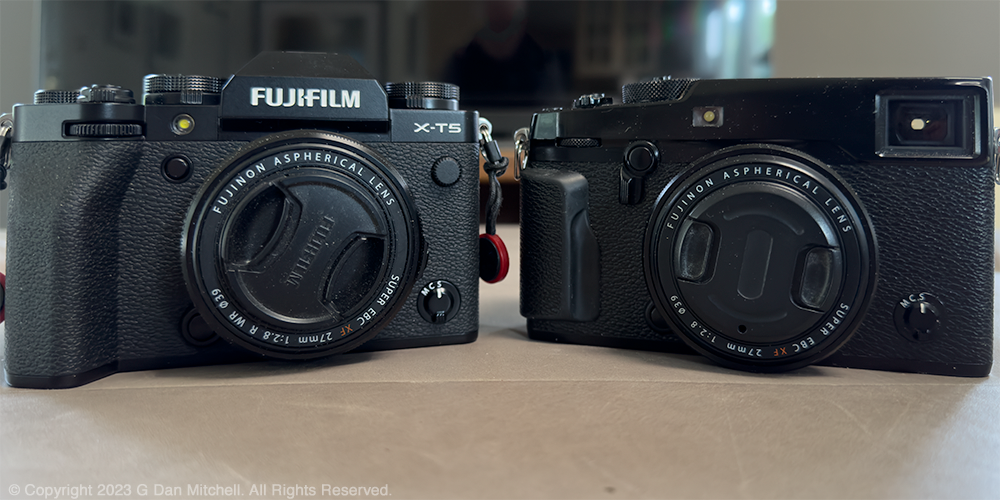The XPro is dead! Long live the XPro! That’s not the main subject of this essay, but based on tea-leaf reading and my own experience with the XT5 I think that’s where we are headed. I’ll get to why I think so near the end of this article.
This article is primarily aimed at Fujifilm users (and potential users) considering the retro XPro design versus the recently released (DSLR-style) mirrorless XT5. It is partly about techie camera stuff, but it is also a story about letting go of preconceptions and adapting to something new.
Since some readers may be unfamiliar with the cameras, here’s a quick summary.
XPro2 — The XPro2 is one of three Fujifilm “XPro” bodies — originally the XPro1 , the subsequent XPro2, and the most recent XPro3. These are rangefinder-style cameras with retro appeal due to their similarity to classic rangefinder film cameras and the inclusion of full manual controls. A key feature is the hybrid viewfinder system combining an old-school optical viewfinder (OVF) and a modern electronic viewfinder (EVF). The XPro2 has a 24MP APS-C sensor, while the newer XPro3 has a 26MP sensor.
XT5 — The XT5 is the most recent (as of this writing) in Fujifilm’s series of XT cameras that combine a small DSLR-like mirrorless body with a full set of manual controls, similar to what is found on the XPro bodies. This new camera uses an updated 40MP sensor — previous models (XT1-4) used 16MP, 24MP, and most recently 26MP sensors.

Because virtually all models in a generation of Fujifilm cameras use the same sensor, Fujfilm owners are more attentive to other functional differences between them. That is why I’ll focus on those things and say little about the sensor.
Continue reading Moving On: Fujifilm XPro2 to XT5
